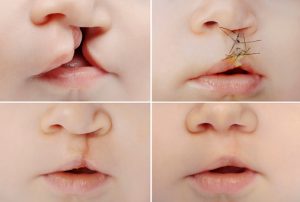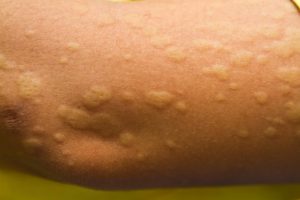Eczema is a condition that causes patches of skin to become red, inflamed, rough and itchy. Eczema is not a specific health condition; it is a reaction pattern that the skin produces as a result of a number of different diseases.
The specific causes of eczema currently remain unknown, but it is believed to develop due to a combination of hereditary (genetic) and environmental factors.
Environmental symptoms of eczema include:
- Irritants – soaps, detergents, shampoos, disinfectants, juices from fresh fruits, meats, or vegetables
- Allergens – dust mites, pets, pollens, mold, dandruff
- Microbes – bacteria such as Staphylococcus aureus, viruses, certain fungi
- Hot and cold temperatures – hot weather, high and low humidity, perspiration from exercise
- Foods – dairy products, eggs, nuts and seeds, soy products, wheat
- Stress – it is not a cause of eczema but can make symptoms worse
- Hormones – women can experience worsening of eczema symptoms at times when their hormone levels are changing, for example during pregnancy and at certain points in their menstrual cycle
Since there is no cure for eczema, treatment for the condition is aimed toward healing the affected skin in an effort to prevent a flare up of symptoms. For some people, eczema goes away over time, and for others, it remains a lifelong condition.
There are a number of things that people with eczema can do to support skin health and alleviate symptoms, such as:
- Taking regular warm baths
- Applying moisturizer within 3 minutes of bathing to “lock in” moisture
- Moisturizing every day
- Wearing cotton and soft fabrics, avoiding rough, scratchy fibers, and tight-fitting clothing
- Using mild soap or a non-soap cleanser when washing
- Air drying or gently patting skin dry with a towel, rather than rubbing skin dry after bathing
- Avoiding rapid changes of temperature and activities that make you sweat (where possible)
- Learning individual eczema triggers and avoiding them
- Using a humidifier in dry or cold weather
- Keeping fingernails short to prevent scratching from breaking skin
Medication can also be helpful in treating or preventing symptoms. These treatments are prescribed by a physician. If you are experiencing symptoms of eczema and would like to speak with a physician, call Flushing Hospital Medical Center’s Ambulatory Care Center at 718-670-5486 to schedule an appointment.
All content of this newsletter is intended for general information purposes only and is not intended or implied to be a substitute for professional medical advice, diagnosis or treatment. Please consult a medical professional before adopting any of the suggestions on this page. You must never disregard professional medical advice or delay seeking medical treatment based upon any content of this newsletter. PROMPTLY CONSULT YOUR PHYSICIAN OR CALL 911 IF YOU BELIEVE YOU HAVE A MEDICAL EMERGENCY.




